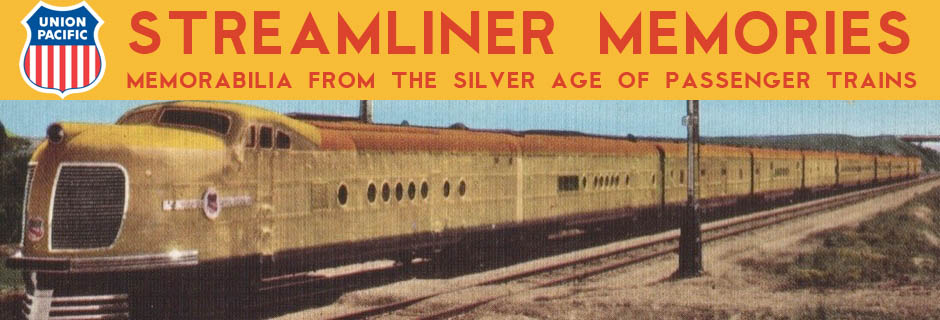I’ve presented this souvenir of the 1969 Golden Spike Centennial before, but at the time I was unable to make decent reproductions of the locomotive portraits contained inside. Also, I recently learned that the original folio contained four locomotive portraits instead of the two I had. I’ve since acquired one with all four portraits and photographed the portraits, which produced better results than my scanner.
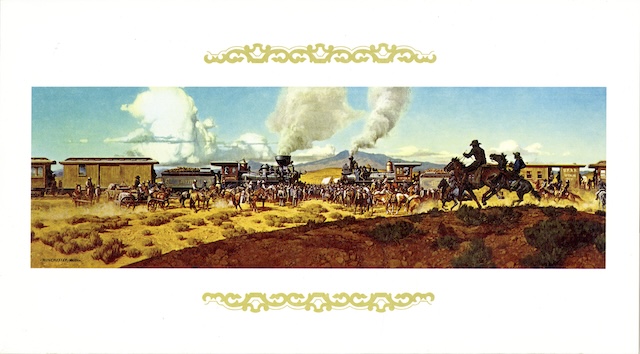 Click image to download a 1.7-MB PDF of this folder.
Click image to download a 1.7-MB PDF of this folder.
This was published by the Golden Spike Centennial Celebration Commission and is strange for several reasons. First, although the Last Spike was a joint effort of Union Pacific and Central Pacific (which later merged into Southern Pacific), the back of this folio has a Union Pacific logo with a Big Boy steam locomotive and Centennial Diesel, but no Central Pacific or Southern Pacific logos. This suggests that UP helped pay for these folios, so I’m counting this as UP memorabilia.
Second, although Union Pacific had commissioned Howard Fogg to make 16 paintings for its centennial, this doesn’t use one of those paintings. Instead, the cover art on this folder was by cowboy artist Frank McCarthy and had been commissioned by rifle manufacturer Winchester-Western.
The painting is called “East Meets West” and Winchester-Western donated it to the National Park Service on May 10, 1969. The painting is currently in the collection of Golden Spike National Historical Park and either it or a replica can be viewed at the park.
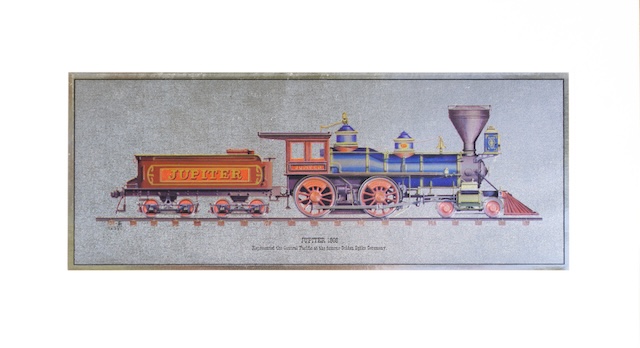 Click image to download a 7.0-MB PDF of the four cards that accompanied the above folder.
Click image to download a 7.0-MB PDF of the four cards that accompanied the above folder.
Third, the four cards representing various historic locomotives are printed on silver foil. This might have been appropriate if UP/SP passenger trains were stainless steel like Burlington’s and Santa Fe’s, but they were not. Gold foil would have been more appropriate as representing the Golden Spike.
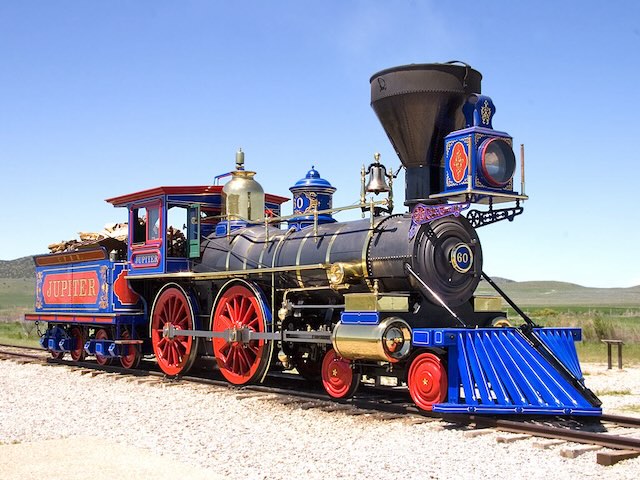
The folio card shows the Jupiter’s boiler in blue, while the replica locomotive at Golden Spike Park has a black boiler. However, the replica locomotive has lots of blue trim, most of which isn’t on the card. Click image for a larger view. Wikipedia photo by Mr. Snrub.
Finally, two of the locomotives in the folio had nothing to do with the Golden Spike ceremony. Naturally, Central Pacific’s Jupiter and Union Pacific’s 119 were included. But a third, the C.P. Huntington, was Central Pacific’s third steam locomotive and later was purchased by Southern Pacific as its first steam locomotive. While historically interesting, it isn’t relevant to the Last Spike.
The fourth locomotive represented in the folio is even less relevant: Illinois Central 382, “the engine piloted by Casey Jones on his famous ride” in 1900. A flyer (1.6-MB PDF flyer) advertising this folio doesn’t explain why these two locomotives were included. With regards to IC 382, it only says, “The fourth print presents the CANNONBALL EXPRESS.”
In fact, the locomotive in the Casey Jones incident wasn’t called the Cannonball Express; that was only used in a 1958 television show that was still being shown in re-runs in 1969. The original locomotive wasn’t even called the Cannonball; that was simply a turn-of-the-century term applied to any fast train.
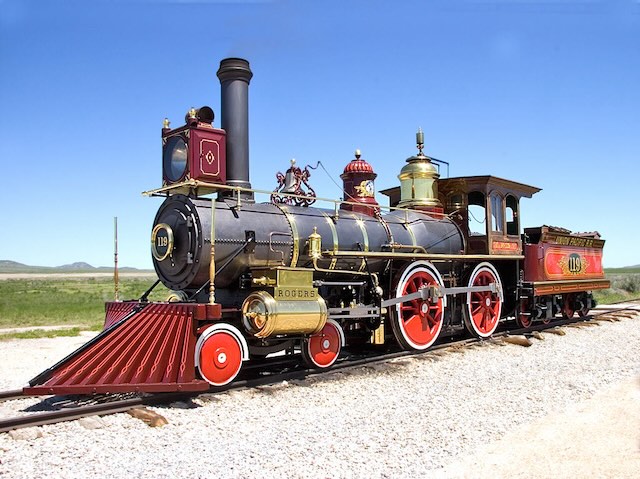
The green trim shown on the folio card is almost all red on the replica locomotive. Click image for a larger view. Wikipedia photo by Mr. Snrub.
For the Jupiter and 119, the locomotive colors on these cards don’t match those on the replica locomotives that are at Golden Spike Park. Since all of the photographs of the 1869 ceremony were in black-and-white, I’m not sure anyone knows what colors the locomotives displayed on that date. By the time the replica locomotives were made in the 1970s, the Park Service apparently concluded that Central Pacific’s Jupiter had more blue and less red while Union Pacific’s 119 had more red and less green than are shown on these cards.
The Golden Spike Centennial Celebration Commission was created by President Johnson and was chaired by Thomas Goodfellow. Goodfellow was president of the Association of American Railroads and the commission shared a Washington DC address with the AAR. The commission sold this portfolio for $5 or about $45 in today’s money. The commission also sold bronze and silver medallions (1.2-MB PDF flyer).
